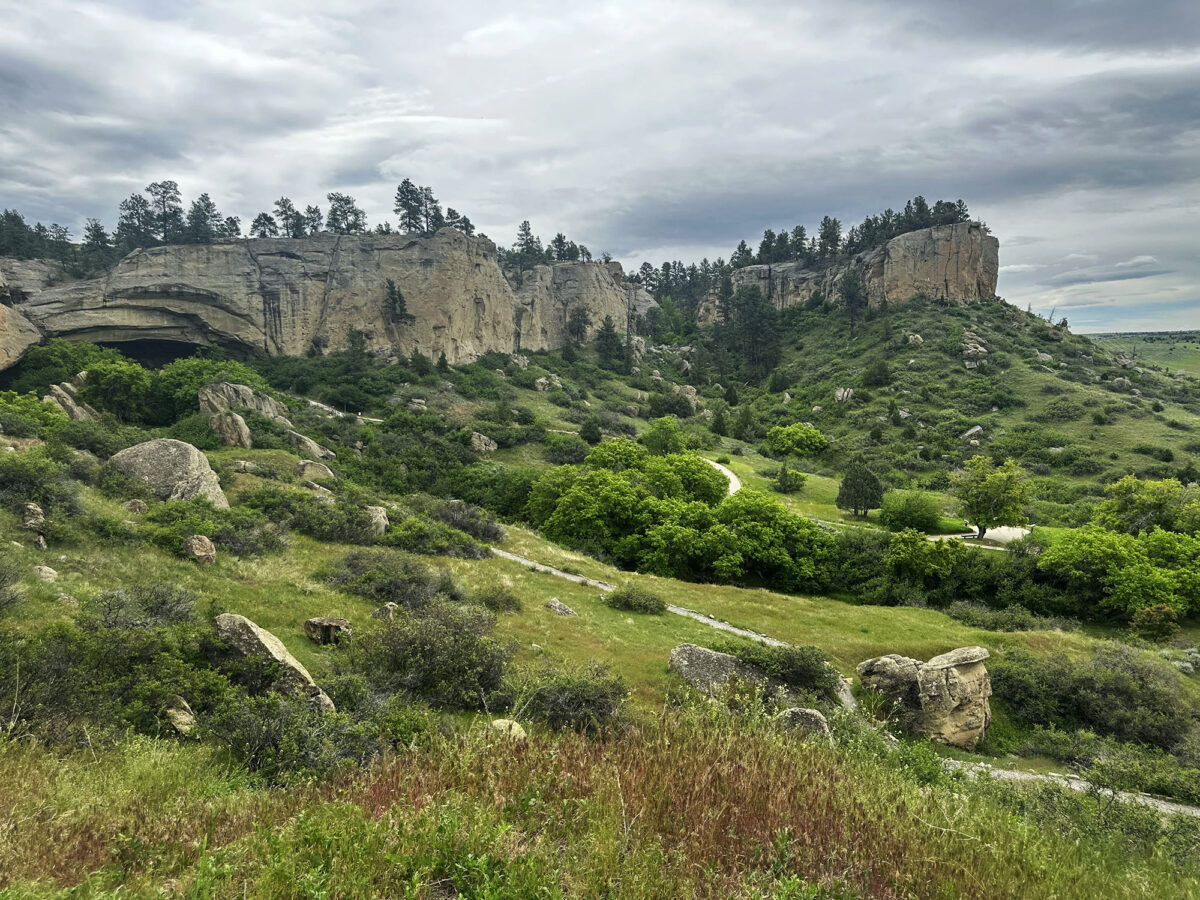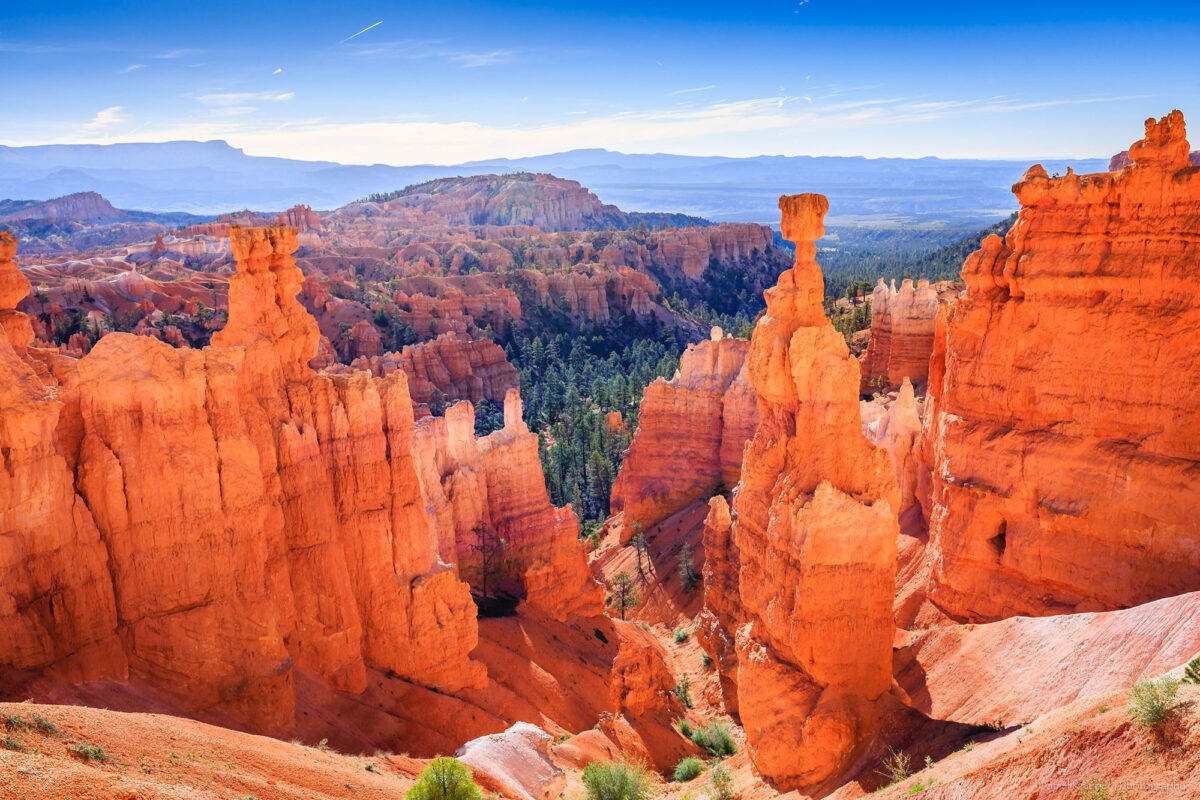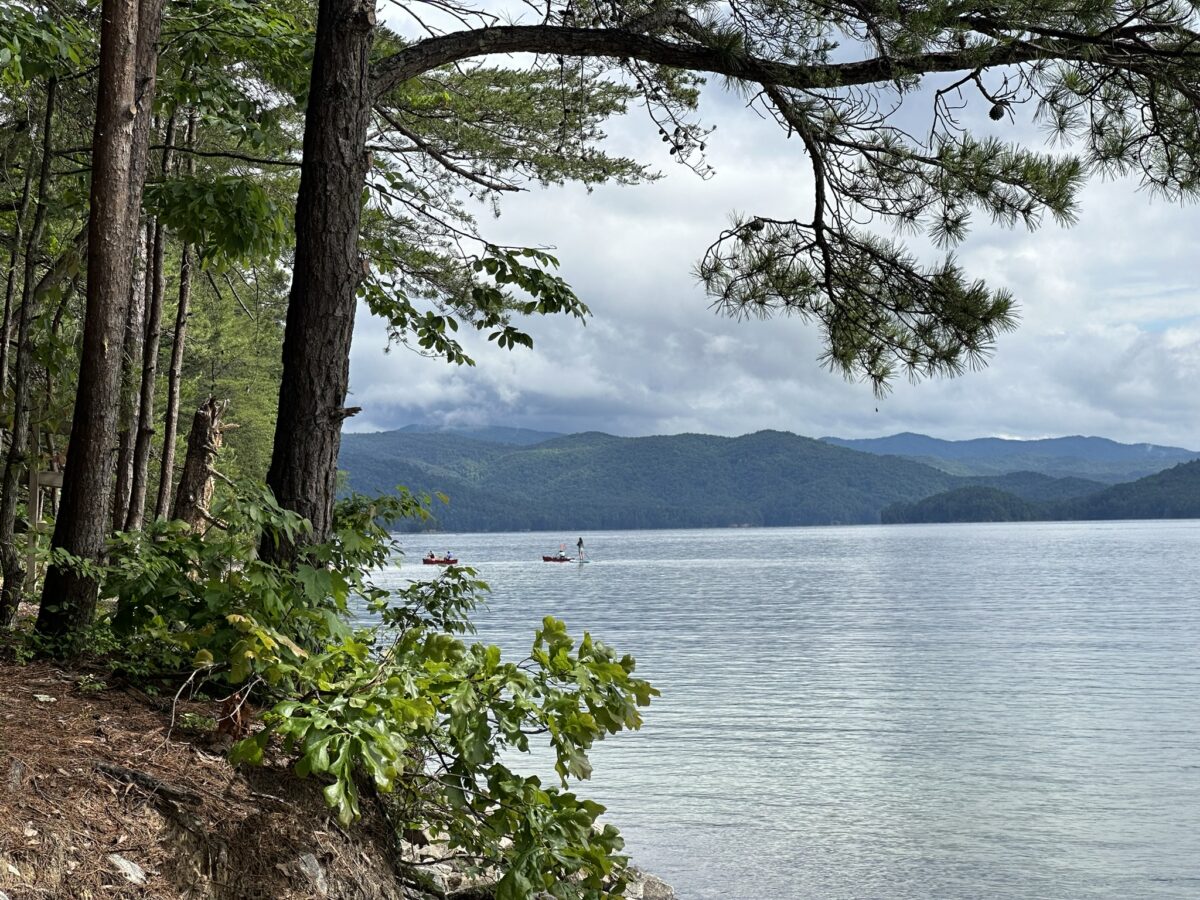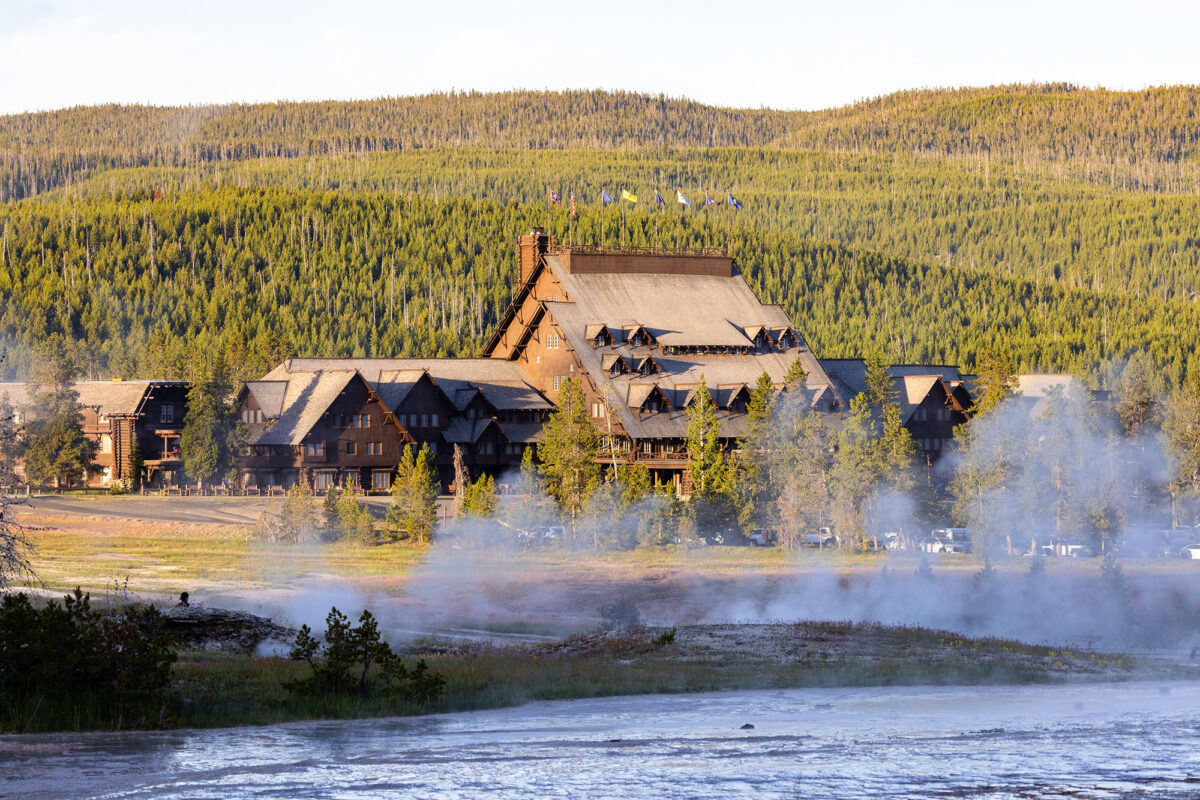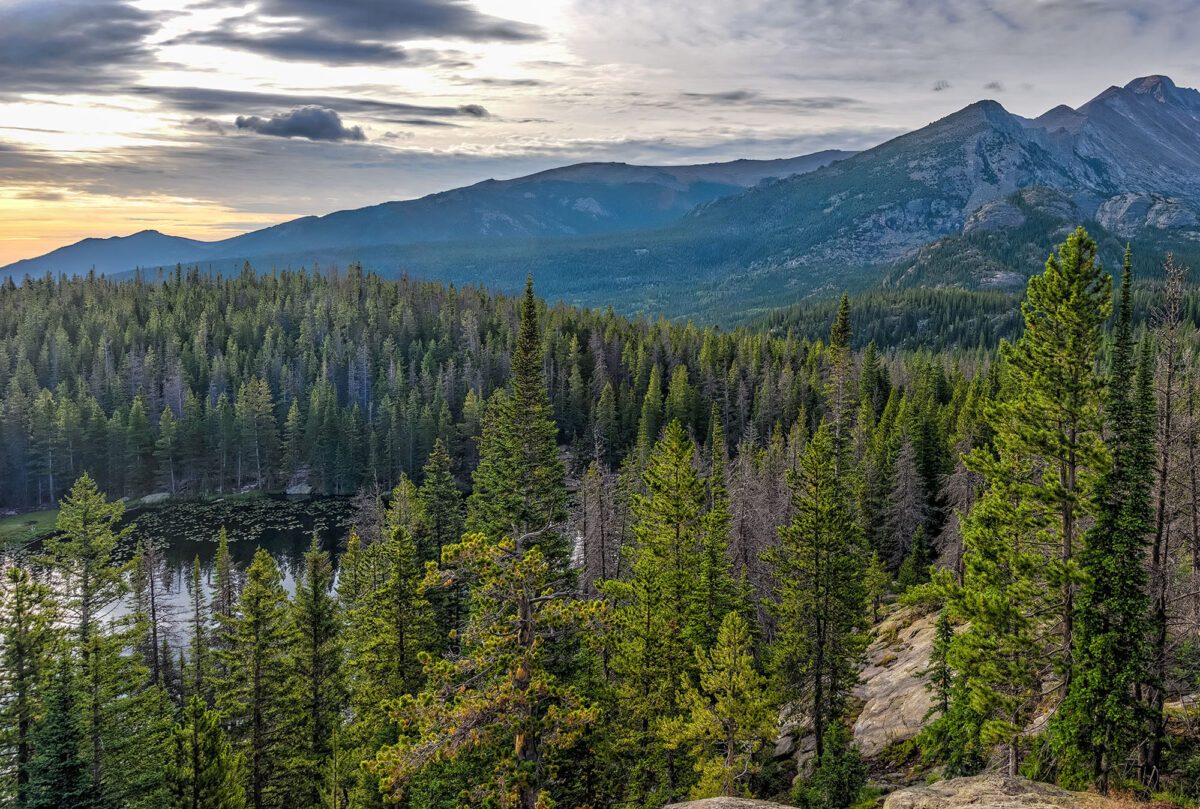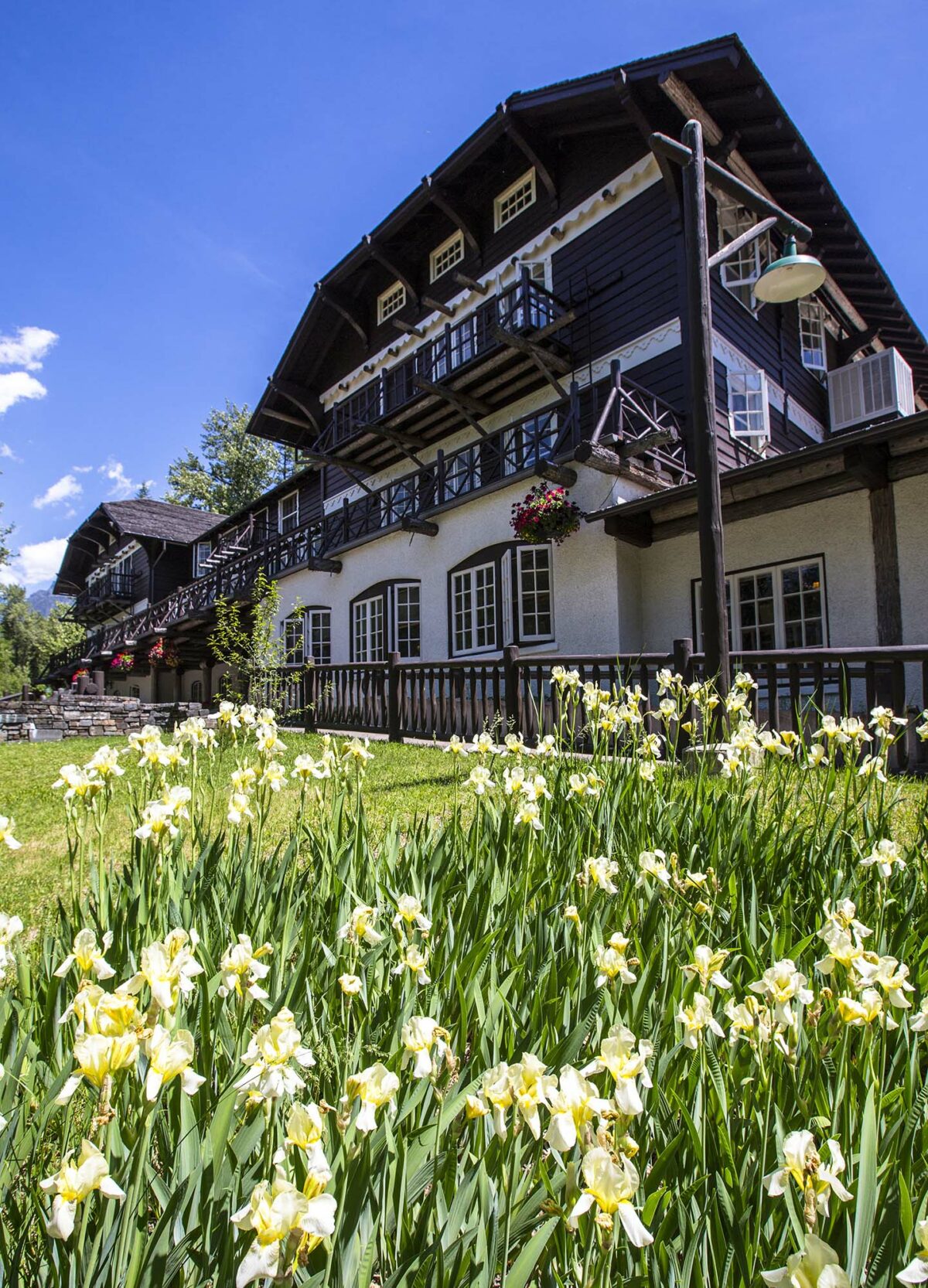One of the West’s most prolific archeological sites is surprisingly accessible. Pictograph Cave State Park is right outside of Billings, Montana. It’s famous for pictographs inside caves and for a phenomenal dig in the 1930s that revealed more than 30,000 artifacts.
“That really put it on the map of archeology in the West,” said Richard Tooke, the park’s ranger/manager/chief cook and bottle washer.
The 23-acre park includes three caves and is located about seven miles south of Billings. At roughly 50,000 visitors per year, it’s one of the busiest parks in south-central Montana. But when I visited on a Monday morning in early June, there were only a few other folks around. Here’s what I saw there and what you can look forward to when you visit.

Pictographs
So, what do the pictographs depict? It’s hard to say for a couple of reasons.
“At least 12 different Northern Plains Indigenous tribes were in and out of here,” said Tooke. Modern Indigenous people might not know what all the pictographs represent. And if they do, they might not want to share that intel with outsiders. Plus, the porous sandstone is not a permanent artistic medium. When people started studying the pictographs in the 1930s, artists recorded about 105 of them. Now it’s hard to see half that many, as rock layers slough off and minerals build up.
Tooke estimates that Montana has 650 to 700 known pictograph sites. Most are on private ranch lands or on remote public lands. “This is one of the few places where people can just get off the interstate and in ten minutes hike up to the cave and see rock art and kind of contemplate this history of these native people being there for thousands of years doing everything people do in life,” Tooke said. The rock art chronicles the lives of long-ago people. “Some of it’s about their spirituality, some of it is simply you know, a grocery list. A grouping of animals, perhaps. This is what you can find here when you hunt and gather.”

In winter, warm air occasionally hits the super chilled rock just right, and additional pictographs become visible. On those days, “You can see 20 or 30 more pictographs than you can see on a drier surface,” Tooke said. The local Crow people call this place Alahpaláaxawaalaatuua, which means a place where there is spirit writing. Tooke said that many visitors still consider the park a place with “a heavy presence of spirits and energy.”

I visited on a dry day where it was hard to identify all but the most obvious pictographs, such as a grouping of red rifles. I relied heavily on signage to help me find the pictographs on the cave wall.

Wildlife at Pictograph Cave State Park
Pictograph Cave State Park is also popular with migratory birds and other wildlife. The visitor center posts a list of about three dozen birds that have recently flown by, including the pinyon jay, northern flicker, Merriam turkey, and the hairy woodpecker.
Tooke told me about a mule deer who for several years running left her fawn on the floor of one of the caves while she went off to forage. “She was pretty smart about leaving her baby where the people would probably dissuade any big cat from coming through,” he said.
The park also has porcupines, coyotes, mule deer, bobcats, mountain lions, and five different types of snakes. Indeed, I was impressed by the most aggressive depiction of a rattlesnake I’ve ever seen on a park warning sign.

Pictograph Cave State Park recreation and education
Visitors also come for recreation. Hikers enjoy a circular trail system, while cyclists like the park roads. Even bikers enjoy the region.
“There’s a lot of motorcycle rallies in the area, and those guys are always in and out,” Tooke said.
In addition to offering recreation opportunities, education is a big part of the park’s job. In the fall, many school groups visit. Montana’s Indian Education for All program requires school curricula to cover Indigenous people. A trip to see the pictographs is a fun way to learn. Astronomy clubs also like to bring their telescopes for night sky viewing events.

Tooke is happy to lead the park’s conservation mission. He explains that he enjoys “taking care of these kind of roadside attractions that have historic cultural meaning and are part of our heritage as Montanans.” Tooke adds that Montanans “take pride in our state park systems and the place we live in.”
Pictograph Cave State Park is open year-round: seven days a week in summer, and five days a week the rest of the year.
